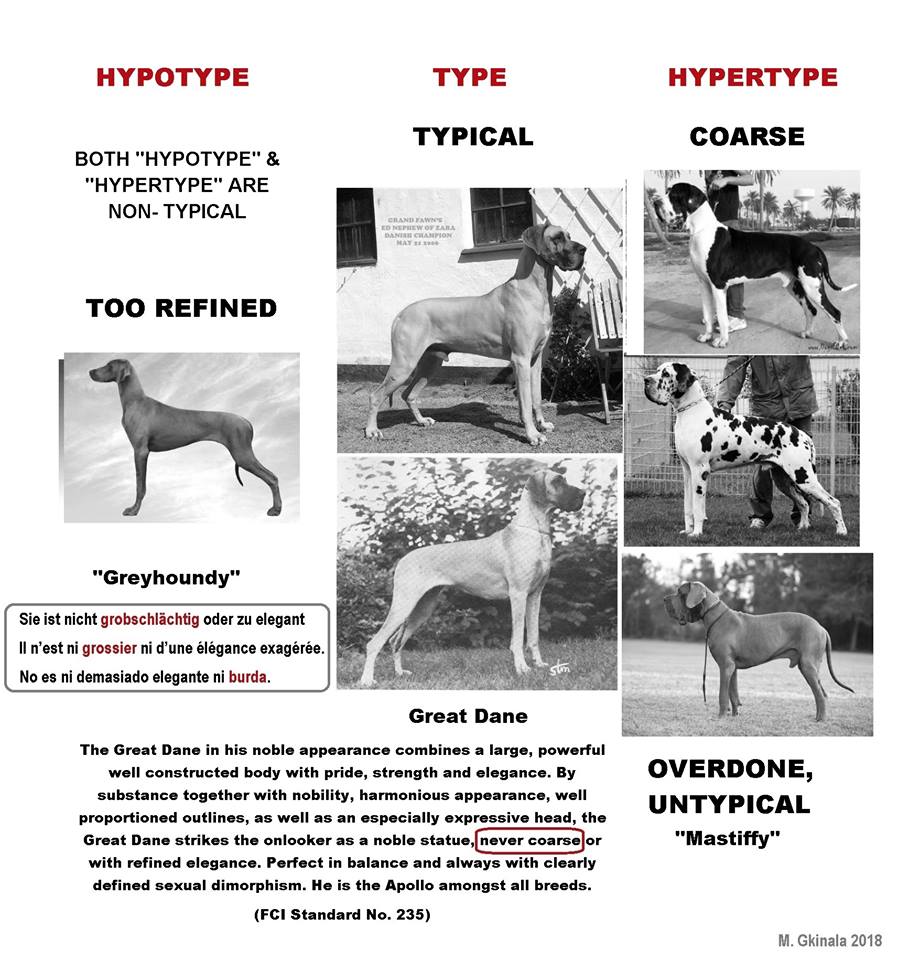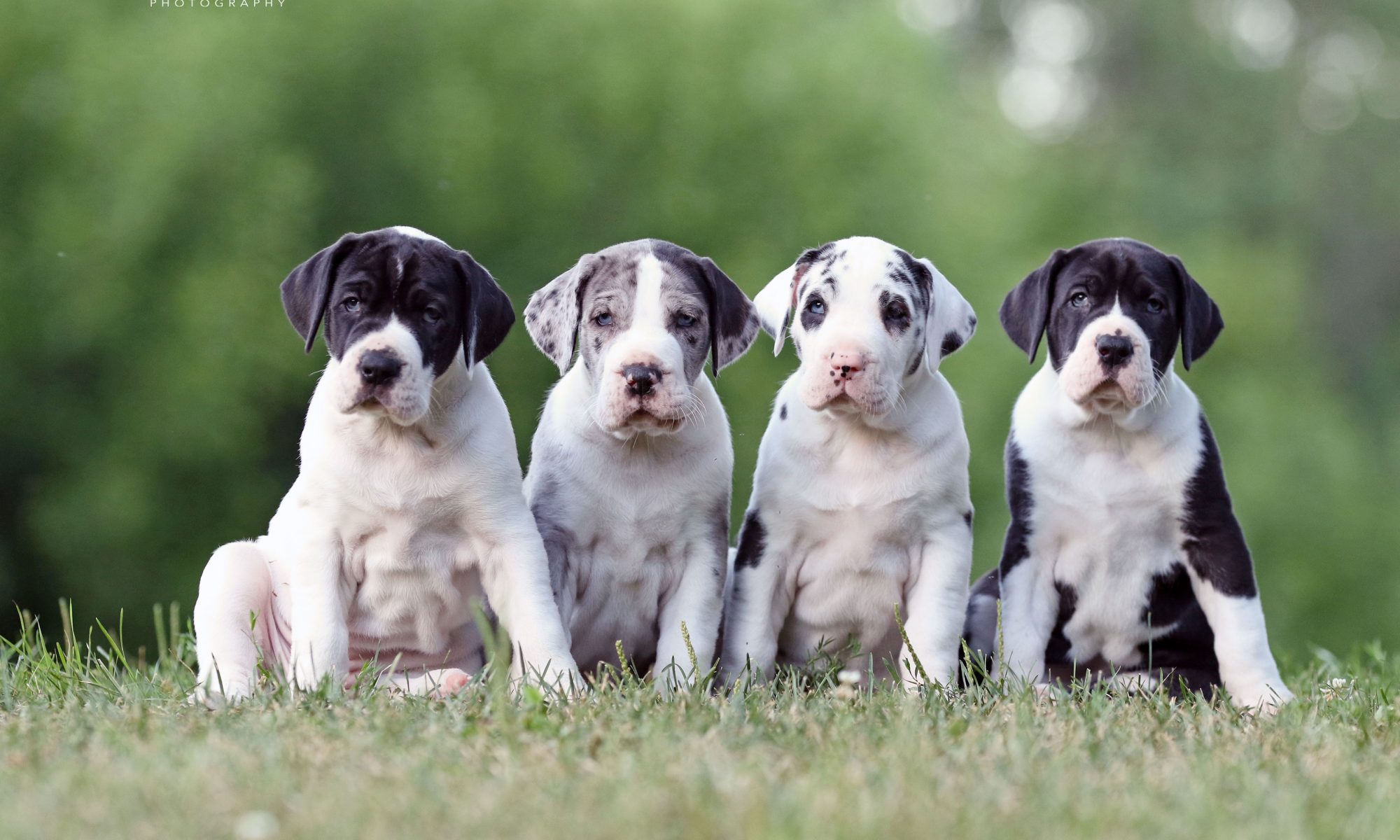There are two aspects of the term “Euro Dane” that I would like to address. First, the actual type difference seen in different countries. Second, the sales tactic of breeders who claim they have Euro Dane puppies.
Type Difference
It should be known that the Great Dane standard is virtually the same, world over. Check out the Great Dane Club of America’s Illustrated Standard and the FCI (Federation Cynologique Internationale) Illustrated Standard.
There is, however, some variance in type preference. Some countries do prefer a heavier, more Mastiff looking, type. Some variance in type is acceptable, however when the type variance becomes so drastic that the dog no longer resembles the original breed, there is a problem.
I would like to point out the first few lines from the GDCA standard:
The Great Dane combines, in its regal appearance, dignity, strength and elegance with great size and a powerful, well-formed, smoothly muscled body. It is one of the giant working breeds, but is unique in that its general conformation must be so well balanced that it never appears clumsy, and shall move with a long reach and powerful drive.
Our Danes should not be confused with a Mastiff or a Greyhound. They should distinctively look like a Great Dane.

Breeders Offering Euro Dane Puppies
Respectfully, I have never seen a responsible breeder boast that their puppies are “Euro”. A good breeder understands a Dane is a Dane is a Dane. Country of origin is irrelevant. Even if they have imported puppies or bred to a dog from overseas, they do not need to make their dogs sound exotic to sell them.
A common ploy is to tout a percentage of “Euro” for a dog. If one pauses to consider this, they will understand that the immaterialness of this statement, because genetics do not work this way. I might be 25% (one grandparent) of certain ethnic background, but that does not mean I have exactly 25% of those genes. Quite possibly the other side of my family tree had a stronger genetic influence in my makeup. I may strongly resemble that one grandparent, or I might look nothing like them.
A breeder can claim anything they wish and it is up to the prospective buyer to do their research and make educated choices.
If you are considering importing a dog, do realize that there are bad (and good) breeders all over the world. A bad breeder thousands of miles away has an easier time pulling the wool over a prospective buyer’s eyes. Before one considers importing a dog into the States, consider that you are at an automatic disadvantage. Not being able to meet any of the puppy’s relatives, verify their living conditions in person, a possible language barriers with the breeder, and a huge distance gap if any problems arise.
Of course, there is also the cost of importing a dog. All of these reasons might play into why many buyers love the idea of purchasing Euro Danes from a breeder here in the States. Unfortunately, bad breeders know and take advantage of this, using the term as a buzz word to encourage sales.
Much more important than an exotic sounding claims are tangible things, which a buyer can verify themselves. Things like health testing, with results publicly displayed in the OFA database. A breeder’s involvement with their breed and their peers, verified via active membership in breed clubs. And, a good reputation with their peers. If you are looking at a breeder, do a reputation check with other breeders. Do not rely on handpicked references offered by the breeder, seek out their peers and ask them. Also important in a good breeding program is a some success in the show ring.
